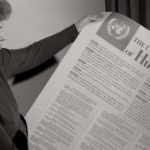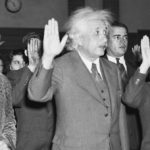December 7 is a date that has lived in infamy since 1941 when bullets and bombs rained down on Naval Station Pearl Harbor in Oahu, Hawaii. The attack killed 2,400 Americans, wounded over 1,000 more, destroyed 20 naval ships and 300 aircraft — and brought World War II to America’s doorstep. It’s a date that Americans remember every year, and rightly so.
There’s another event that’s also worth recalling on a date like December 7. While it’s not an event that is known by nearly as many people, it’s connected in an interesting way to the events that were unleashed on December 7, 1941. And it continues to speak to important issues in our own day.
It’s an event that was documented in the newspapers that Americans opened nine years earlier, on December 7, 1932. It happened the day before in Germany. And it involved one of the most notable figures of the 20th century, Albert Einstein, the father of modern physics who would later play a role in bringing the Second World War to its end.
Although he was celebrated internationally for transforming modern science, Einstein, a German of Jewish ancestry, had become a high-profile target for the anti-Semitism festering in his homeland in the early 1930s. With his scientific works branded “un-German” and his name banned from lectures and academic papers by the rising Nazi party, 52-year-old Einstein joined the exodus of world-renowned scientists, scholars and artists from Germany. He abandoned his prized position at the Prussian Academy of Sciences and turned his back on Berlin — then considered the world’s center of physics — resolving to be “a bird of passage for the rest of my life.” [1]
He abandoned his prized position at the Prussian Academy of Sciences and turned his back on Berlin — then considered the world’s center of physics — resolving to be “a bird of passage for
the rest of my life.”
Countries across the West were eager to welcome the gifted physicist. But, after years of considering his options across Europe, Einstein and his wife Elsa decided to seek more permanent refuge in the United States, lured by numerous offers from American universities. Some Americans, however, felt the Nobel Prize winner was a danger to the country, a sentiment spearheaded by the Woman Patriot Corporation. This group of anti-communists, anti-pacifists, anti-feminists, anti-socialists and defenders against “undesirable aliens” filed a 16-page complaint with the U.S. State Department. In it they charged that Einstein was “inadmissible” to the United States and should be barred from entry. They claimed the world-renowned scientist was “affiliated with more Communist groups than Joseph Stalin himself” [2] and “not merely a pernicious influence; he was the ringleader of an anarcho-communist program whose aim was to shatter the military machinery of national governments as a preliminary for world revolution.” [3]

Although the Woman Patriot’s rhetoric was dismissed by most, the group’s allegations helped sell a lot of newspapers, which in turn fanned Americans’ fears of immigrants and communists — even while drawing ridicule from many, including Einstein himself.
Speaking to the Berlin bureau chief of the United Press, Einstein derided the organization as “a gang of cackling geese.” But his amusement quickly faded when he received a call from the U.S. Consulate General in Berlin, who questioned him about his politics, his pacifist leanings and his affiliations. Was he a Communist? An anarchist? Did he sympathize with the Moscow regime? After nearly an hour of quizzing, Einstein chafed at the interrogation: “Your countrymen invited me. Yes, begged me. If you don’t want to give me a visa please say so, then I’ll know where I stand. But don’t ask me any more bating questions.” [4]
Soon after Einstein phoned the consulate with an ultimatum. If by the following day he had not received a visa, he’d cancel his trip. Knowing many prominent Americans anxiously awaited the physicist’s arrival, the counsel general, George Messersmith, immediately notified the State Department in Washington, D.C., that he would issue the visa. And so on December 6, 1932, Einstein received word that passage to the States was granted. Eight years later, he was sworn in as an American citizen. [5]
Once in the U.S., Einstein used his position to engage in and advance the causes he cared about. He chaired war resistance, anti-fascist, anti-segregation and anti-lynching groups, becoming viewed by some as a radical who believed in anti-militarism, pacifism, internationalism and socialism. His many varied associations caught the interest of J. Edgar Hoover, director of the Federal Bureau of Investigation, who saw Einstein as a “dangerous subversive.” The FBI wiretapped his phone, intercepted his mail and looked into deporting him. [6] The FBI amassed a 1,427-page dossier on him over the next 23 years. [7]
They claimed the world-renowned scientist was “affiliated with more Communist groups than Joseph Stalin himself.”
“I belong to no political party,” Einstein later wrote. “Publicly I am a scientist, but as a private citizen I claim the right to feel and believe and fight for the interests of culture and of justice. I have always considered it my duty to intervene when justice is at stake, even though I am bitterly attacked for it. I feel honored because I have had a certain kind of enemies.”[8]
Einstein and Elsa eventually settled into a two-storied white frame house at 112 Mercer Street in Princeton, New Jersey. The so-called “pope of physics” was now at Princeton, which soon became a mecca for gifted physicists from around the world.[9]
Despite the quiet and comfort of their new life and home, the couple’s thoughts were never far from Europe. “I am privileged by fate to live here in Princeton,” he wrote to the Queen of Belgium. “In this small university town the chaotic voices of human strife barely penetrate. I am almost ashamed to be living in such peace while all the rest struggle and suffer.” As the crisis in Europe deepened, Einstein was further compelled to act.
He set out to help his fellow German Jews. He and Elsa applied for visas and personally vouched for refugees fleeing Nazi rule. There were no programs or agencies to assist refugees then. So in July 1933, Einstein formed the International Relief Association with 51 prominent Americans, including philosopher John Dewey, writer John Dos Passos and theologian Reinhold Niebuhr. Later, First Lady Eleanor Roosevelt joined the effort. Its mission was to “assist Germans suffering from the policies of the Hitler regime.” When Paris fell to Adolph Hitler, the Emergency Rescue Committee was formed. Eventually, the two groups merged into today’s International Rescue Committee, the first civilian group to aid European refugees at the end of World War II.[10]
The conflict in Europe and in the Pacific challenged Einstein’s antiwar views, and ironically, his breakthrough equation E = mc2, connecting the mass of an object with its energy, would serve as the foundation of a devastating new weapon: the atomic bomb.[11]
In October 1939, a group of Hungarian immigrant physicists tried to alert officials in Washington, D.C. that the Nazis were conducting nuclear research to build an atomic bomb. Their warnings were ignored. Fearful that German scientists would win the race to build an atomic bomb — and knowing that Hitler would use it — the group appealed to Einstein to use his stature and influence to warn the U.S. government.
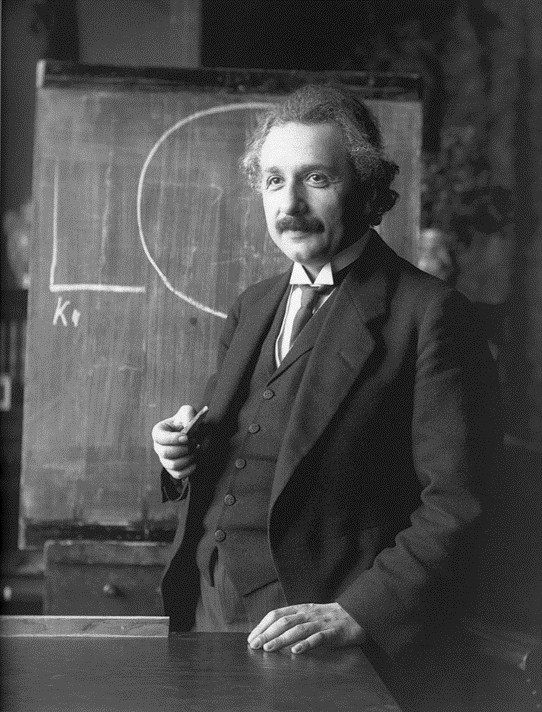
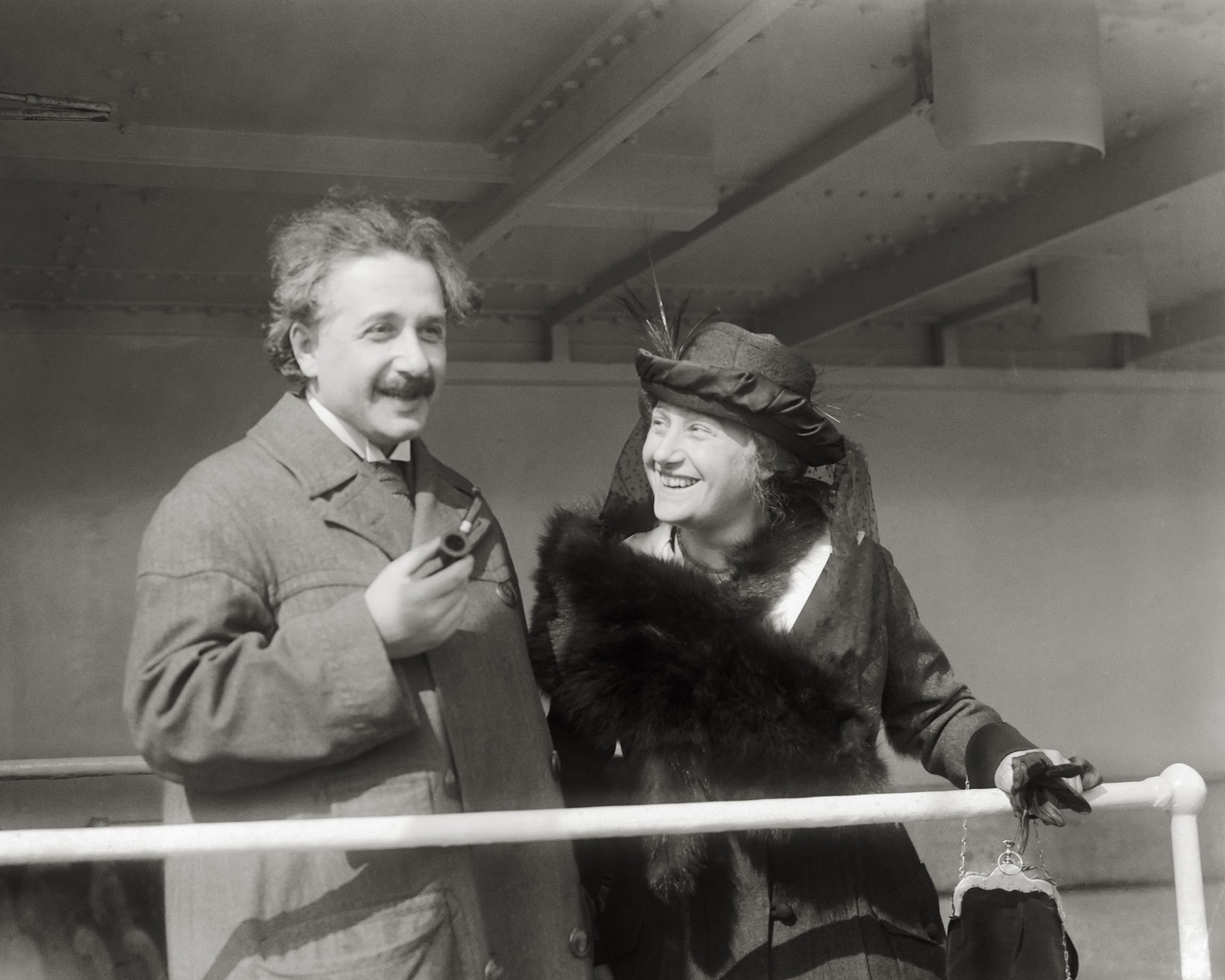
Einstein agreed to write a letter to President Roosevelt warning of the Nazis’ nuclear work and recommending the U.S. engage in its own nuclear weapons research. The president paid attention, and Einstein’s letter is believed to be “arguably the key stimulus for the U.S. adoption of serious investigations into nuclear weapons.”[12] His visit to the White House spurred the formation of the Manhattan Project, which created the first atomic bombs, two of which were dropped on Japan, ending the war with the U.S. in the Pacific that had begun on December 7, 1941.
Some say the war would have ended without the bomb. Others say it shaved years off the war and saved millions of lives. Einstein later regretted his role in the creation of the first atomic weapon. Although he said his letter to the president may have been “the one great mistake in my life,” he acknowledged that “there was some justification, the danger that the Germans would make them first.”[13]
While we’ll never know what our world would look like without Einstein’s letter to the President about E = mc2, these events provide a powerful reminder of two overarching themes of American history. The nation’s leadership in science and technology consistently has been advanced by key contributions made by immigrants. And despite these contributions, immigration policy, even for highly-valued talent, has always been fraught with controversy.
Viewed from the vantage point of 2017, it takes more than a moment to digest the fact that a visa for Albert Einstein was a point of controversy. Across the country and around the world, it’s hard to make it through high school without learning his name and the importance of his contributions. What nation would not want him as a citizen, either in peacetime or even more when confronted by increasing tensions in a dangerous world?
In our own day there have been numerous immigrants that have followed in Einstein’s footsteps in the United States. Only a few win a Nobel Prize. But many have founded or led companies and contributed to important scientific discoveries. Perhaps nowhere is this more prevalent than in the technology sector in which we work. Just as the United States led the world in harnessing the power of the atom by building on the breakthroughs of talented immigrants, so the country leads the global technology sector today in important part because of the work of people who have come from other countries.
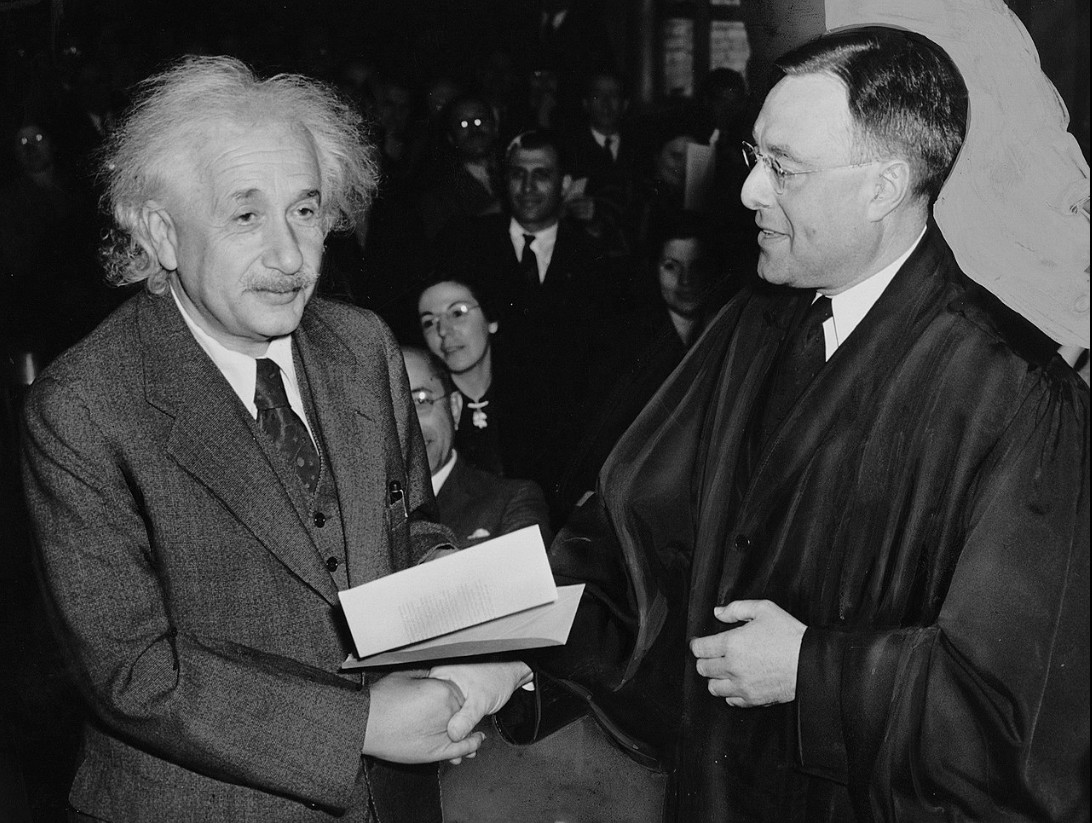
None of this means that every person who wants to enter the country should be permitted to do so. Immigration remains complicated, in the United States and every other country. But Einstein’s story reminds us of the enormous upside of attracting the best talent in the world – and the fact that the fullness of this talent and its potential contributions only emerge over time.
At a time when Congress (hopefully) will soon be turning its attention to DACA and a new generation of Dreamers, and at a time when high-skilled talent from some countries confront a bureaucratic green card backlog, immigration remains an opportunity not just for immigrants, but for all of us who were born in the United States that can benefit from their presence.
Einstein’s story is a reminder of one other aspect as well. We all know that on December 7, 1941, Americans turned on their radio to hear about the flashpoint that shattered lives and divided the world. It’s an interesting contrast to learn that on December 7, 1932, Americans opened their newspapers to read about an event that brought a foreigner to our shores and connected to the century’s greatest scientific advances.
December 7 is a date on which we should remember the terrible forces that can divide us. As well as the more hopeful steps that can bring us together.
[1] Walter Isaacson, Einstein: His Life and Universe (New York: Simon & Schuster, 2007), p. 394.
[2] “Professor Einstein Reiterates Pacifist Views in Challenge to Women’s Patriot Corporation”. Jewish Telegraphic Agency. Retrieved Dec. 7, 2017.
[3] Albert Einstein, (Einstein on Politics: His Private Thoughts and Public Stands on Nationalism, Zionism, War, Peace, and the Bomb (Princeton: Princeton University Press, 2013).
[4] Isaacson, Einstein: His Life and Universe, p. 400.
[5] https://www.britannica.com/biography/Albert-Einstein
[6] Albert Huebner, “Reclaiming Einstein’s Legacy: Why the FBI Went After the ‘Person of the Century,’ and How the Same Mistakes are being Repeated.” Toward Freedom, January 31, 2003, p. 13.
[7] Isaacson, Einstein: His Life and Universe, p. 399.
[8] “Professor Einstein Reiterates Pacifist Views in Challenge to Women’s Patriot Corporation”. Jewish Telegraphic Agency. Retrieved Dec. 6, 2017.
[9] https://www.britannica.com/biography/Albert-Einstein
[10] Ibid.
[11] Sarah J. Diehl, James Clay Moltz, Nuclear Weapons and Nonproliferation: A Reference Handbook. (Santa Barbara: ABC-CLIO 2007), p. 218.
[12] Ronald W. Clark; Einstein: His Life & Times (New York: Random House, 1995).




